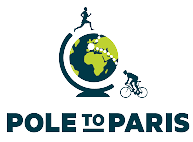Is ATSC 3.0 a government mandate?
Is ATSC 3.0 a government mandate?
And with no government mandate to move to ATSC 3.0 (as there was to stimulate the move from NTSC to Digital TV in the mid-1990’s), stations can choose not to participate and continue their HD service using the ATSC 1.0 transmission system.
Does ATSC 3.0 require a new tuner?
In lieu of buying a new TV with ATSC 3.0 support, you’ll need an external tuner to take advantage of the new broadcast standard, but those don’t come cheap, either.
When did ATSC 3.0 come out?
South Korea literally paved the road to ATSC 3.0, adopting its Next Gen TV standard in 2016 and launching 4K Ultra High Definition ATSC 3.0 broadcasts in May 2017.
When did the United States transition to all digital television DTV ATSC )?
Congress passed the Telecommunications Act of 1996 with the original transition date of December 31, 2006. However, the transition to digital television was set back three times: first to December 31, 2008, then to February 17, 2009, and then finally to June 12, 2009.
Does ATSC 3.0 require an Internet connection?
No. Even though ATSC 3.0 OTA broadcasts are designed to work hand-in-hand with content delivered over the internet, you do not need an internet connection. Using just your antenna and an ATSC 3.0 tuner, you’ll be able to watch every local station that is broadcasting in the new standard.
What TVs have an ATSC 3.0 tuner?
The best TVs with ATSC 3.0 tuners
- Samsung QN90A Neo QLED TV. The best TV with ATSC 3.0.
- LG G2 OLED. LG’s ATSC 3.0 king is the G2 OLED.
- Sony Bravia XR A80J OLED. The best Sony OLED with ATSC 3.0.
- LG G1 OLED. 2021’s premium LG 4K OLED with NextGen TV.
- LG GX OLED TV.
How do I get Nextgen TV?
Here’s how to get NEXTGEN TV
- Check. availability. NEXTGEN TV is on track to be available to over 80% of U.S. households.
- Purchase. NEXTGEN-enabled TV. Look for the NEXTGEN TV logo at retail from the many brands committed to delivering new enhanced TV features.
- Fire up. your antenna.
- Connect to. the internet.
What is the difference between DVB and ATSC?
ATSC 3.0 uses an IP-based transport layer, while DVB-T2 relies on the MPEG-2 Transport Stream. DVB has also defined an encapsulation scheme for using IP on DVB-T2. DVB’s Conditional Access specifications underpin the majority of the world’s broadcast pay-TV services.
How many channels does ATSC 3.0 have?
While ATSC 1.0 uses Dolby AC-3 — an audio format that is limited to 5.1 channel surround sound — ATSC 3.0 uses the newer Dolby AC-4 for broadcasts of up to 7.1. 4 channel audio, and it supports object-based sound formats like Dolby Atmos.
